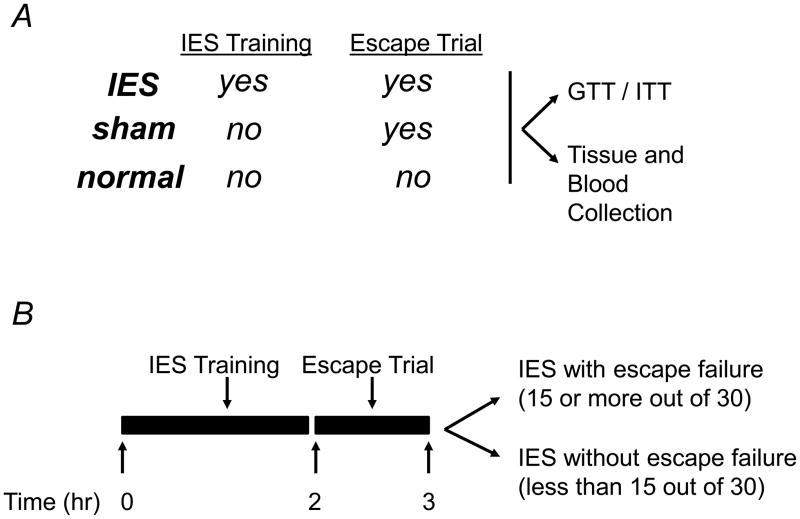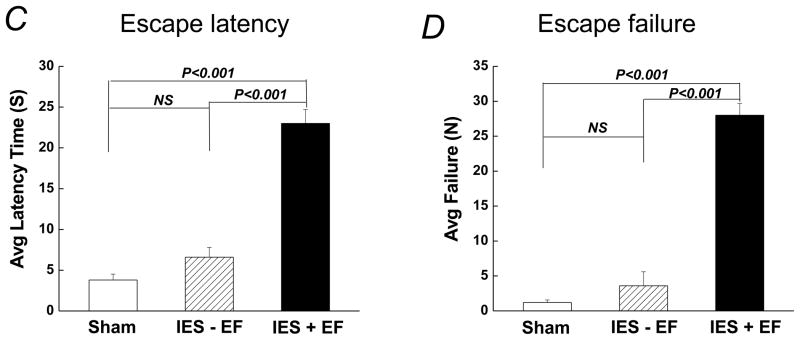Figure 1. Inescapable foot shocks (IES)-induced behavioral changes in mice.
(A) Animal groups included in the study and different treatments. (B) Schedule for the IES training, escape test, blood and tissue collection, and insulin/glucose tolerance tests. (C and D) Mice were tested for behavioral changes, which was assessed by calculating escape latency and escape failure. Mice that were exposed to IES and had 15 or more than 15 out of the 30 escape trials were IES with escape failure group (IES+EF), had less than 15 out of the 30 escape trials were IES without escape failure group (IES−EF). There are 16 mice in sham group, 4 mice in IES without escape failure group (IES−EF group) and 20 mice in IES with escape failure group (IES+EF group).


